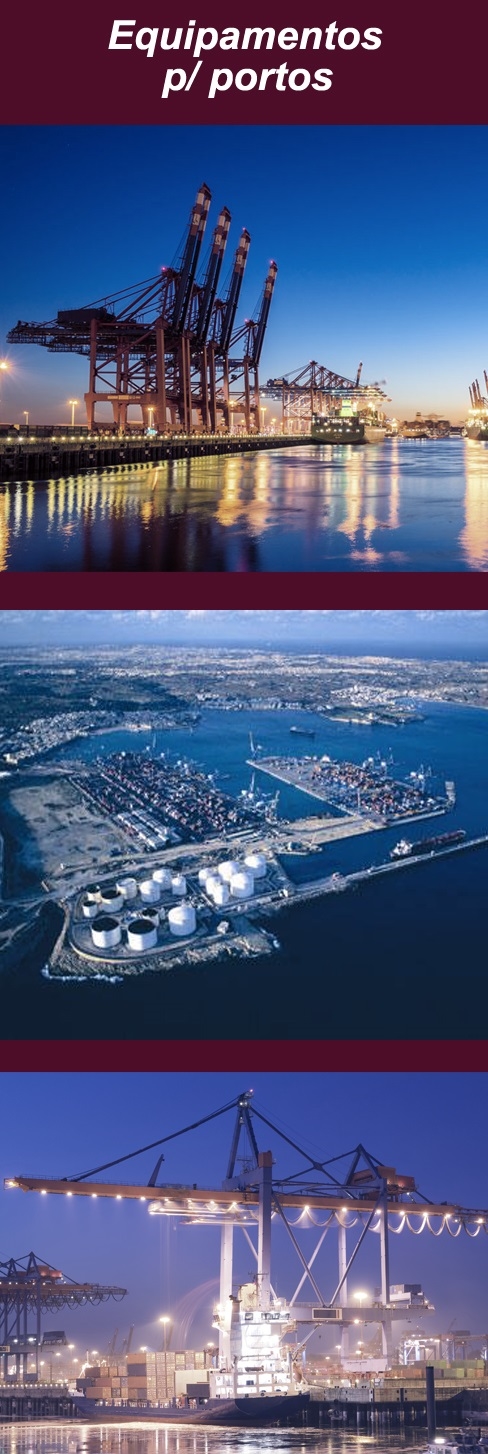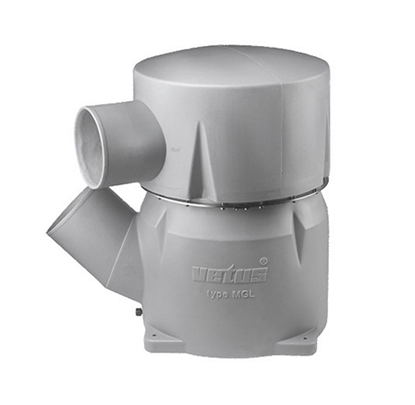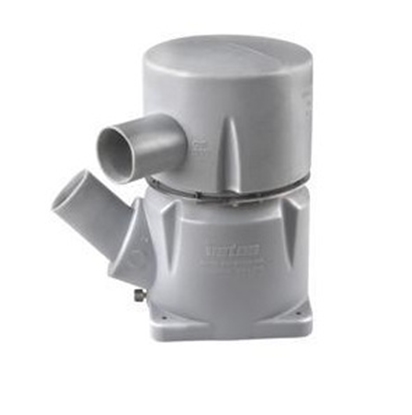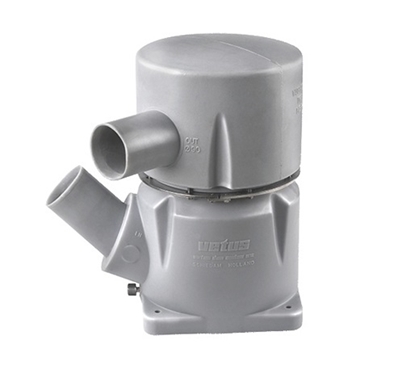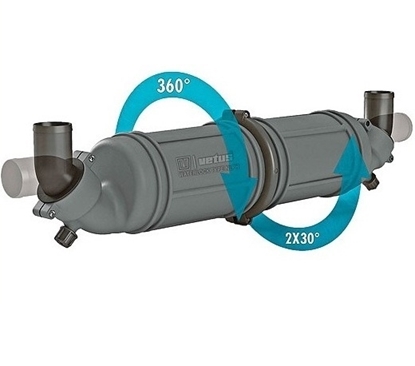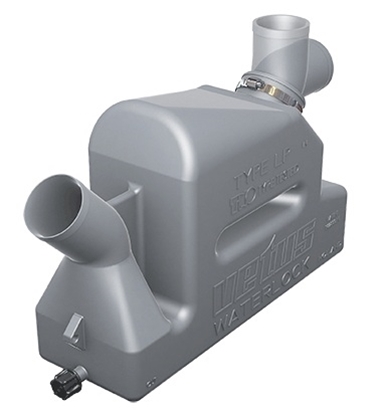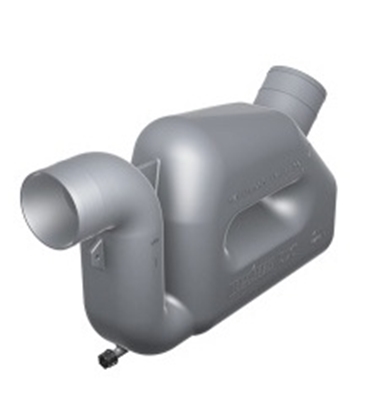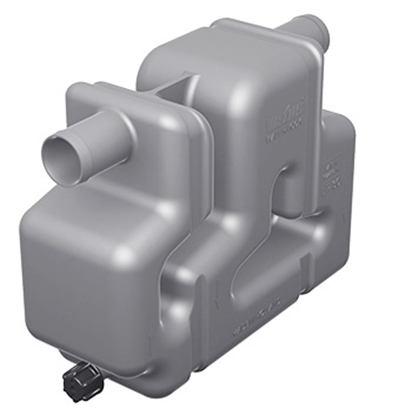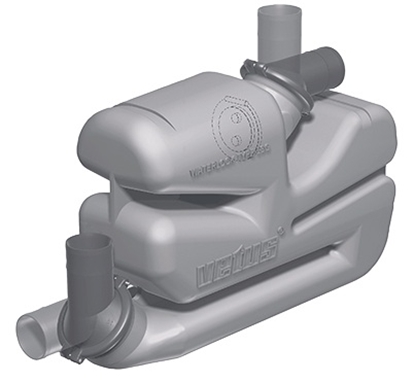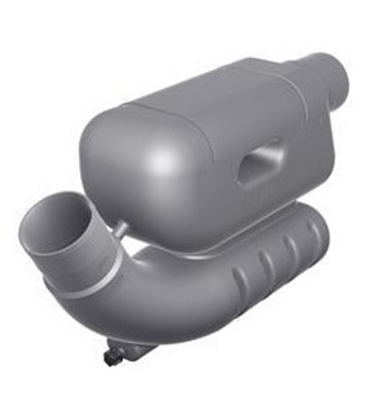Shopping cart
Search
Waterlocks
Waterlocks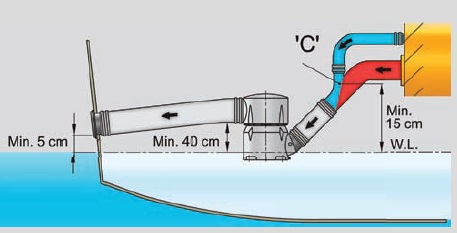

Often in a modern high performance boat, with one or two large engines installed, there is very little space to spare in the engine room.
Vetus waterlocks, model MG are designed to make even the most awkward installation possible.
The outlet connection at the top will rotate through 360° and the inlet connection is at an angle of 45° upward.
For a minimum order quantity of 10 pieces, we can supply these waterlocks with the inlet or outlet connection at an angle of 0°, 15° or 30°.
Vetus waterlocks, type MG, may only be installed in water injected exhaust systems.
They are made entirely of synthetic materials (no corrosion or galvanic action), have excellent sound reduction properties and cause minimal back pressure.
The clamp bands are made of stainless steel. Provided with a drain cock for winter storage.
The clamp bands are made of stainless steel. Provided with a drain cock for winter storage.
Waterlock/mufflers (diam. 40-45-50-60-75-90 mm)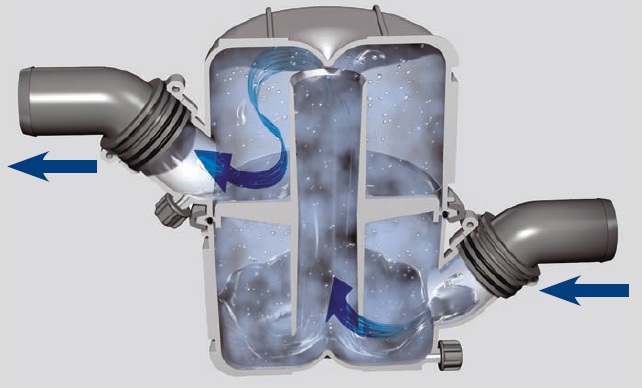
The NLP waterlocks are of dual stage construction, featuring upper and lower chambers with a horizontal partition plate and a riser tube through the centre.
Compared with single stage waterlocks using only one chamber, these NLP waterlocks offer superior silencing of exhaust noise with minimal back pressure.
Since the top chamber may be rotated through 360° and both the inlet and the outlet connectors can rotate through 360°, installation of the exhaust assembly even in confined engine spaces is greatly simplified.
How these waterlocks operate
The rotatable inlet of the waterlock is connected to the engine exhaust manifold, using Vetus exhaust hose.
The exhaust gases, mixed with cooling water are forced from the lower chamber into the upper one, via the central riser tube and then through the (also rotatable) outlet connector at the top.
This outlet connector is coupled to the transom connector, again by means of Vetus exhaust hose.
For optimum silencing of exhaust noise, we recommend installation of a Vetus muffler and gooseneck NLPG in the exhaust line, after the NLP waterlock.

The NLP waterlocks are of dual stage construction, featuring upper and lower chambers with a horizontal partition plate and a riser tube through the centre.
Compared with single stage waterlocks using only one chamber, these NLP waterlocks offer superior silencing of exhaust noise with minimal back pressure.
Since the top chamber may be rotated through 360° and both the inlet and the outlet connectors can rotate through 360°, installation of the exhaust assembly even in confined engine spaces is greatly simplified.
How these waterlocks operate
The rotatable inlet of the waterlock is connected to the engine exhaust manifold, using Vetus exhaust hose.
The exhaust gases, mixed with cooling water are forced from the lower chamber into the upper one, via the central riser tube and then through the (also rotatable) outlet connector at the top.
This outlet connector is coupled to the transom connector, again by means of Vetus exhaust hose.
For optimum silencing of exhaust noise, we recommend installation of a Vetus muffler and gooseneck NLPG in the exhaust line, after the NLP waterlock.
Why Vetus exhaust systems?
• Rotating connections and bodies for easy installation of hoses from any angle
• Excellent noise reduction combined with minimal back pressure
• Combination gooseneck/muffler and waterlock/muffler
Airvent ASD

• Rotating connections and bodies for easy installation of hoses from any angle
• Excellent noise reduction combined with minimal back pressure
• Combination gooseneck/muffler and waterlock/muffler
Airvent ASD
• The only one on the market with virtually no maintenance.
Can be easily dismantled by hand for cleaning
Why use a water-injected "wet exhaust system?
The following factors are of great importance:
1) Exhaust gas temperatures can reach very high levels.
A diesel engine can easily produce an exhaust gas temperature of 600° C or more.
2) The speed with which sound can be transmitted through air is dependent on the temperature of the air.
Why use a water-injected "wet exhaust system?
The following factors are of great importance:
1) Exhaust gas temperatures can reach very high levels.
A diesel engine can easily produce an exhaust gas temperature of 600° C or more.
2) The speed with which sound can be transmitted through air is dependent on the temperature of the air.
This applies to exhaust gases as well.
The higher the exhaust temperature, the higher the speed of sound through the gas.
3) The sound level, i.e. the relative volume of sound as experienced by the human ear, is in turn dependent on the speed of sound.
3) The sound level, i.e. the relative volume of sound as experienced by the human ear, is in turn dependent on the speed of sound.
As the speed of sound transmission reduces, so the sound level will reduce proportionally.
In the past, many boats used a “dry” exhaust system, in which the exhaust gases were transported to outside the hull without any form of cooling.
The resultant hot exhaust pipe had to be thoroughly insulated, but even so, it produced a tremendous amount of noise.
However, reduction of exhaust gas temperature to about 40° or 50°C can be achieved by injecting the engine cooling water into the exhaust line.
In the past, many boats used a “dry” exhaust system, in which the exhaust gases were transported to outside the hull without any form of cooling.
The resultant hot exhaust pipe had to be thoroughly insulated, but even so, it produced a tremendous amount of noise.
However, reduction of exhaust gas temperature to about 40° or 50°C can be achieved by injecting the engine cooling water into the exhaust line.
This is how a “wet” exhaust system works.In addition, the typical diesel exhaust smell is also considerably reduced.
A further major advantage of reducing the temperature, is the fact that all exhaust components downstream from the engine outlet can be made from rubber or synthetic materials.
A further major advantage of reducing the temperature, is the fact that all exhaust components downstream from the engine outlet can be made from rubber or synthetic materials.
This permits greater design sophistication and weight reduction and ensures freedom from corrosion.
What requirements must be fulfilled by a "wet exhaust system?
In its simplest form, a rubber hose, running from the engine directly to the transom of the boat, seems adequate enough.
However, the following issues must also be taken into consideration:
• After the engine is stopped, the cooling water in the exhaust system must not be able to flow back into the engine.
• Water outside the boat must be prevented from entering the exhaust system and therefore the engine, through the transom connection.
In order to fulfil these requirements, Vetus offers a complete range of exhaust components made of synthetic materials, such as:
A waterlock will collect the cooling water present in the system when the engine is stopped.
What requirements must be fulfilled by a "wet exhaust system?
In its simplest form, a rubber hose, running from the engine directly to the transom of the boat, seems adequate enough.
However, the following issues must also be taken into consideration:
• After the engine is stopped, the cooling water in the exhaust system must not be able to flow back into the engine.
• Water outside the boat must be prevented from entering the exhaust system and therefore the engine, through the transom connection.
In order to fulfil these requirements, Vetus offers a complete range of exhaust components made of synthetic materials, such as:
A waterlock will collect the cooling water present in the system when the engine is stopped.
In addition, a waterlock has great sound-deadening capabilities and acts as a very efficient muffler.
The size of the water lock is not only determined by the diameter of the exhaust hose, but also by the quantity of water that must be collected.
The size of the water lock is not only determined by the diameter of the exhaust hose, but also by the quantity of water that must be collected.
Therefore, Vetus offers waterlocks with extra large capacity for systems with long exhaust runs.
A gooseneck raises the exhaust hose above the waterline, so that water cannot backfill the exhaust system.
After the engine is stopped, all cooling water in the exhaust hose will run to the lowest point of the system, which is where the waterlock should be situated.
A gooseneck raises the exhaust hose above the waterline, so that water cannot backfill the exhaust system.
After the engine is stopped, all cooling water in the exhaust hose will run to the lowest point of the system, which is where the waterlock should be situated.
In order to limit the quantity of water, the gooseneck should be fitted as closely as possible behind the waterlock.
But, if required, it may also be fitted directly onto the transom exhaust connection.
The transom exhaust connection should be fitted above the waterline, as a general rule.
We recommend Vetus rubber exhaust hose for all water-injected exhaust systems:
The transom exhaust connection should be fitted above the waterline, as a general rule.
We recommend Vetus rubber exhaust hose for all water-injected exhaust systems:
Vetus exhaust hose is extremely flexible but it cannot collapse when subjected to heat and is resistant to exhaust gases, temperatures up to 100°C, and oil residues.
These hoses are Lloyd’s approved and satisfy the SAE J2006 R2 directives.
Always fit an exhaust temperature alarm. in order to warn of excessive temperature in the exhaust
system. This can happen if the cooling water flow is restricted
or blocked altogether. Vetus marine diesel engines have an exhaust temperature alarm fitted as standard.
The height of the cooling water injection point into the exhaust system, relative to the external waterline, is of great importance.
Always fit an exhaust temperature alarm. in order to warn of excessive temperature in the exhaust
system. This can happen if the cooling water flow is restricted
or blocked altogether. Vetus marine diesel engines have an exhaust temperature alarm fitted as standard.
The height of the cooling water injection point into the exhaust system, relative to the external waterline, is of great importance.
If the water injection point is 15 cm or more above the waterline, the cooling water may be injected directly into the exhaust system.
However, if the water injection point is less than 15 cm above the waterline (or even below it) there is a risk that the cooling system will siphon water through the intake, once the engine is stopped.
This water will fill up the exhaust system and eventually get back into the engine cylinders via the exhaust valves.
This water will fill up the exhaust system and eventually get back into the engine cylinders via the exhaust valves.
This siphon action may be prevented by having a breather hose
(1) in the cooling water line or by fitting an air vent (2).
(1) in the cooling water line or by fitting an air vent (2).
Vetus waterlock for exhaust MGL6458A
Call for pricing
Vetus waterlock for exhaust MGP9090
Call for pricing
Vetus waterlock for exhaust MGS5455A
Call for pricing
VetusWater muffler NLP 10 litres
Call for pricing
VetusWater muffler NLP 4.5 litres
Call for pricing
VetusWater muffler NLPH 10 litres
Call for pricing
VetusWater muffler NLPH 3 litres
Call for pricing
Waterlock L40R - 4.3 litres
Call for pricing
Waterlock L50S - 10.5 litres
Call for pricing
Waterlock LP30 - 2.3 litres
Call for pricing
Waterlock LSG 60 - 17 litros
Call for pricing
Waterlock LSL 60 - 16 litros
Call for pricing
- 1
- 2
Waterlocks
Filter by:
Clear All